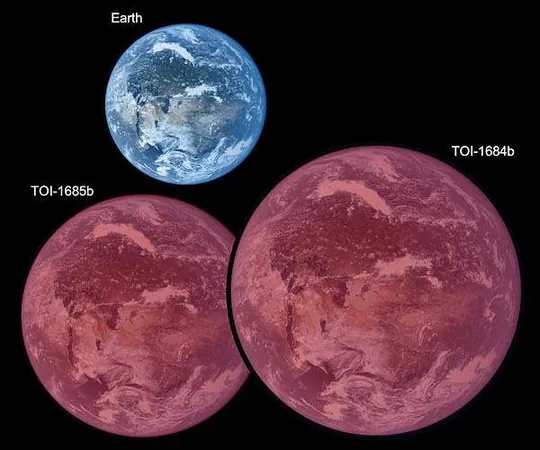
Groundbreaking Research Reveals How a 'Super-Earth' Could Transform Our Solar System!
2025-01-15
Author: Jia
Introduction
In a stunning revelation, a recent research study conducted by Emily Simpson, a graduate of Florida Tech, has explored the significant impact that a hypothetical 'super-Earth' located between Mars and Jupiter could have on the inner planets of our solar system. This exciting work underscores the uniqueness of our solar system in comparison to others that have been discovered throughout the galaxy.
Research Overview
Simpson's research, documented in her paper titled "How might a planet between Mars and Jupiter influence the inner solar system? Effects on orbital motion, obliquity, and eccentricity," has been featured in the esteemed journal *Icarus*. Collaborating with her advisor, Professor Howard Chen, she developed a sophisticated 3D model to simulate the potential changes in our solar system's structure and dynamics if a planet at least twice the size of Earth existed in place of the current asteroid belt.
Key Questions
The central question posed by Simpson is intriguing: "What if the asteroid belt had formed into a planet instead? How would that have influenced the conditions of the inner planets—Venus, Earth, and Mars?" This question resonates with a growing interest in planetary science, especially since the discovery of the first exoplanet in 1992, which has spurred curiosity about the diversity of solar systems beyond our own.
Findings and Implications
The findings of the research are both fascinating and complex. Simpson proposed several mass scenarios for the hypothetical planet, ranging from 1% to 10 times the mass of Earth. By simulating orbits over two million years, she examined the potential impacts on the other inner planets' axises and orbits—key factors that affect climate and seasonal variability.
In her simulations, lower-mass planets had minimal adverse effects on the habitability of the inner solar system, allowing for conditions that could still support life. Simpson remarked, "If we had a planet one or two Earth masses, the inner solar system's conditions would remain rather livable, though we might see some shifts in seasonal temperatures."
However, as the hypothetical planet's mass increased, the situation became more alarming. The research indicated that a planet ten times the Earth's mass could lead to perilous changes, increasing obliquity and eccentricity among the inner planets. This would result in extreme temperature fluctuations, potentially threatening the delicate balance required to sustain life.
Extraterrestrial Life and Future Research
These findings have intriguing implications for the search for extraterrestrial life. By understanding how the presence and mass of a super-Earth would affect habitability, scientists can better assess which exoplanets might harbor life. "If we discover a system similar to ours but with a different planetary arrangement, it's crucial to determine the size of any super-Earth present," explains Simpson. "If it’s too massive, it would likely render inner planets inhospitable."
This groundbreaking research not only sheds light on the characteristics of our solar system but also provides valuable insights into the potential for life-supporting conditions in other planetary systems. As astronomers continue their search for new worlds, the lessons learned from Simpson's work may pave the way for identifying habitable zones elsewhere in the universe.
Conclusion
Could this be the key to unraveling the mysteries of life beyond Earth? The hunt for answers continues!
 Brasil (PT)
Brasil (PT)
 Canada (EN)
Canada (EN)
 Chile (ES)
Chile (ES)
 Česko (CS)
Česko (CS)
 대한민국 (KO)
대한민국 (KO)
 España (ES)
España (ES)
 France (FR)
France (FR)
 Hong Kong (EN)
Hong Kong (EN)
 Italia (IT)
Italia (IT)
 日本 (JA)
日本 (JA)
 Magyarország (HU)
Magyarország (HU)
 Norge (NO)
Norge (NO)
 Polska (PL)
Polska (PL)
 Schweiz (DE)
Schweiz (DE)
 Singapore (EN)
Singapore (EN)
 Sverige (SV)
Sverige (SV)
 Suomi (FI)
Suomi (FI)
 Türkiye (TR)
Türkiye (TR)
 الإمارات العربية المتحدة (AR)
الإمارات العربية المتحدة (AR)